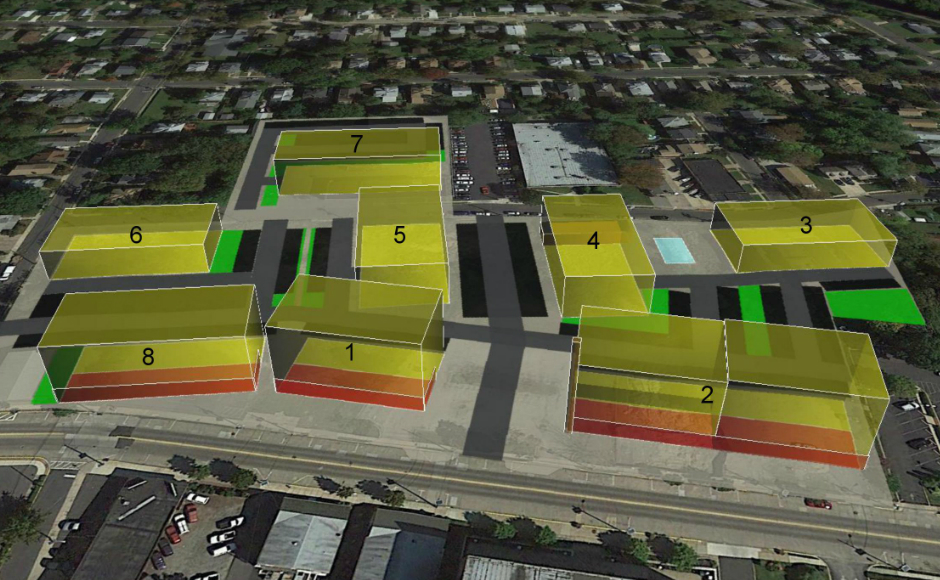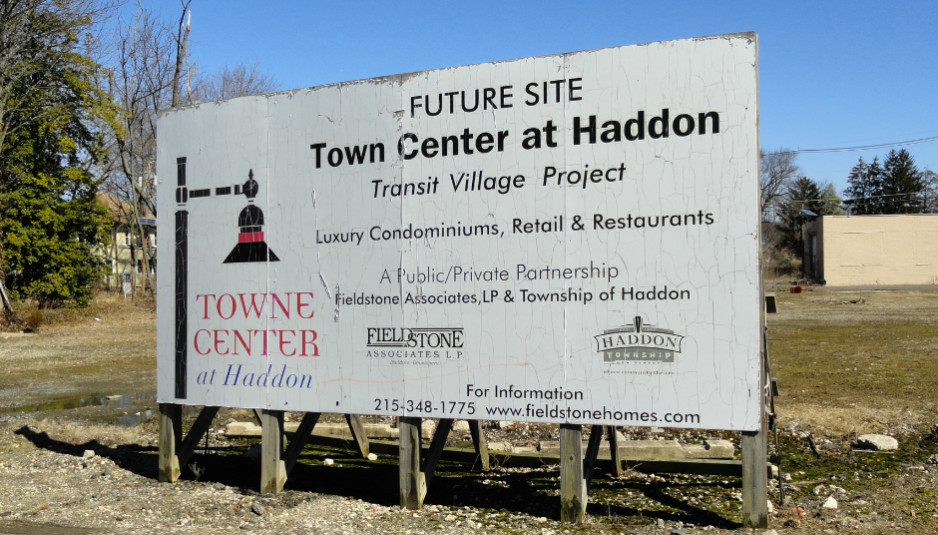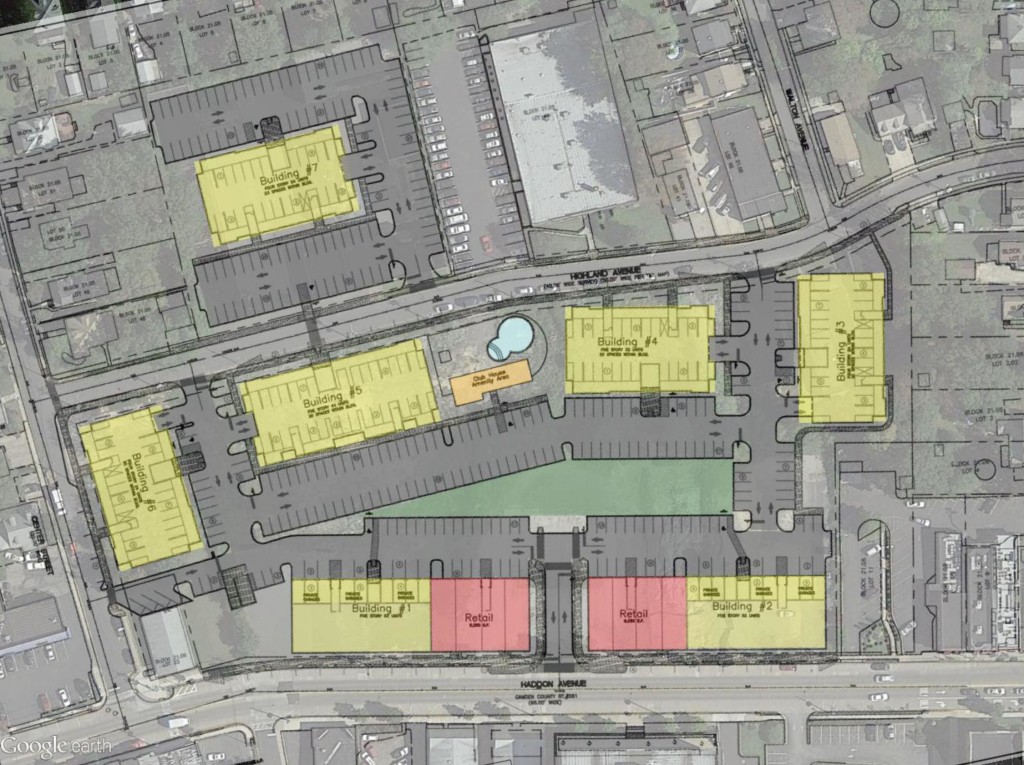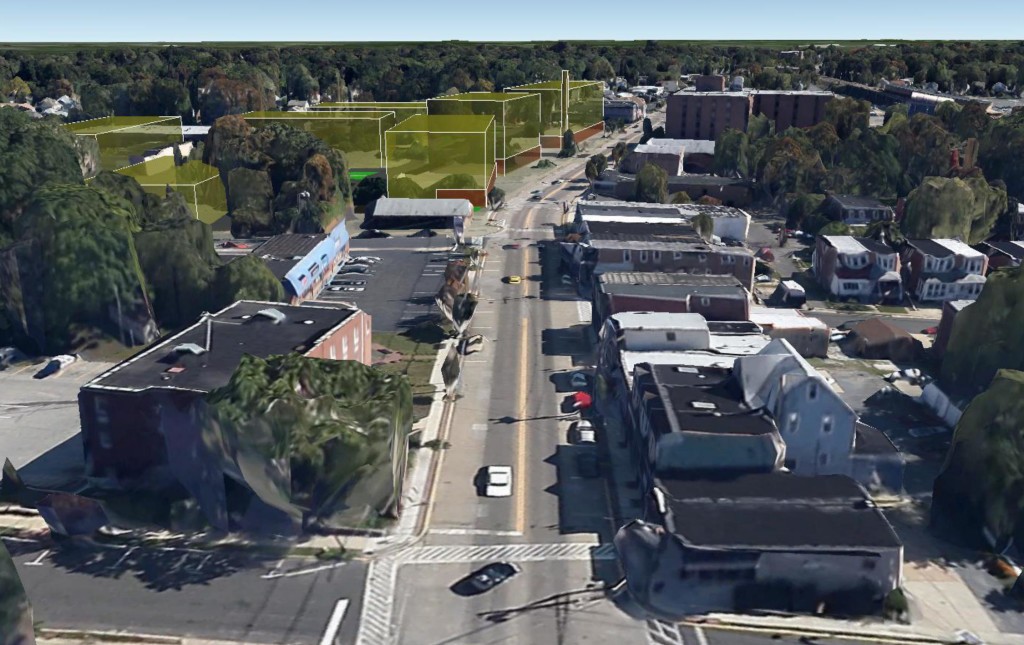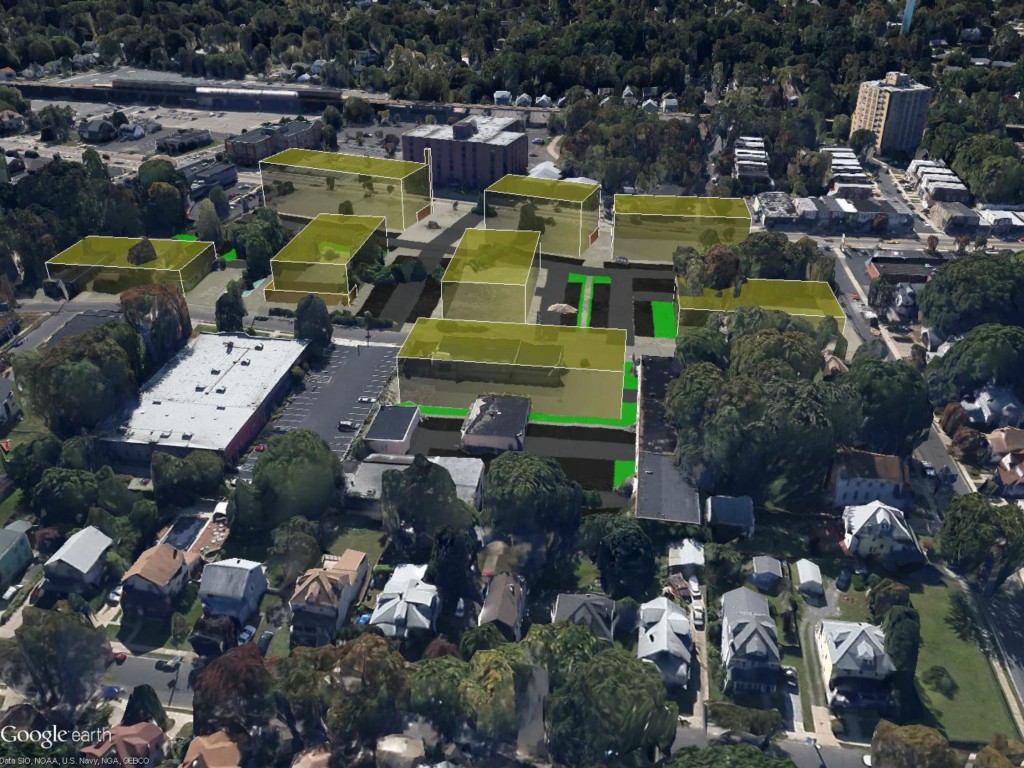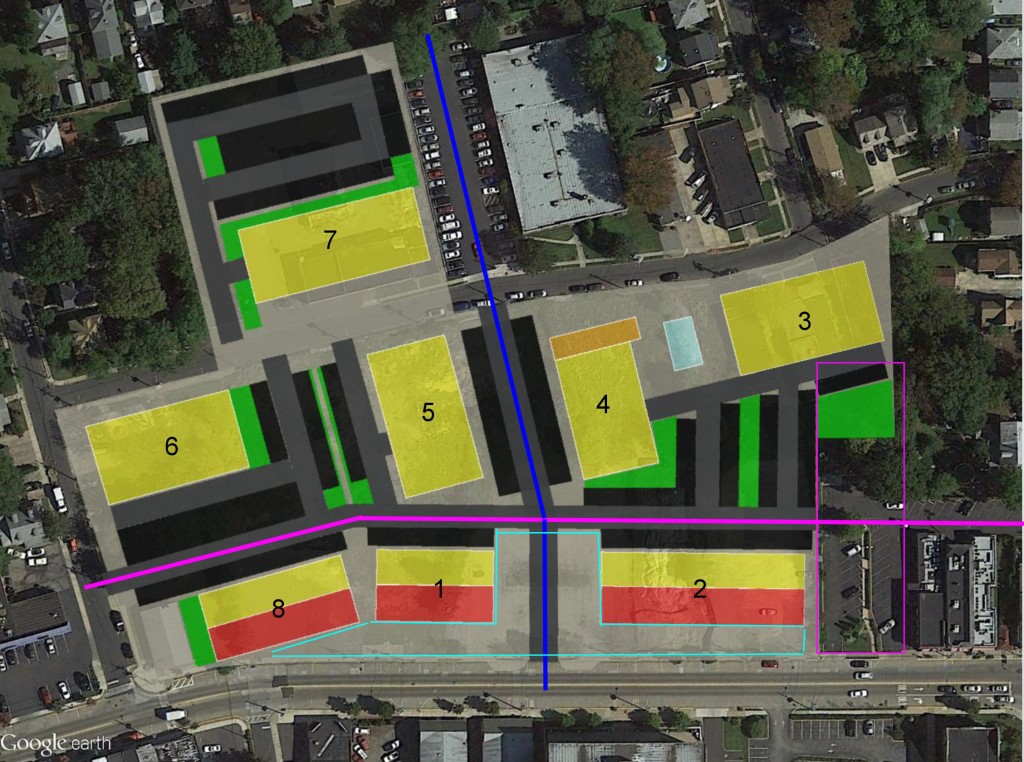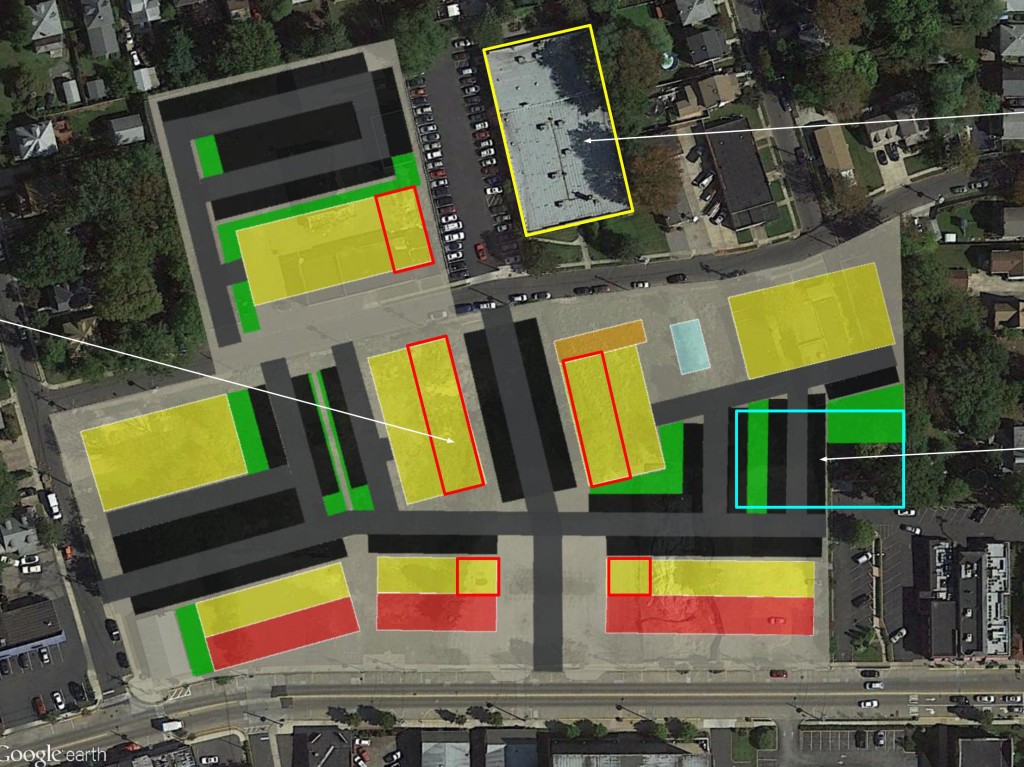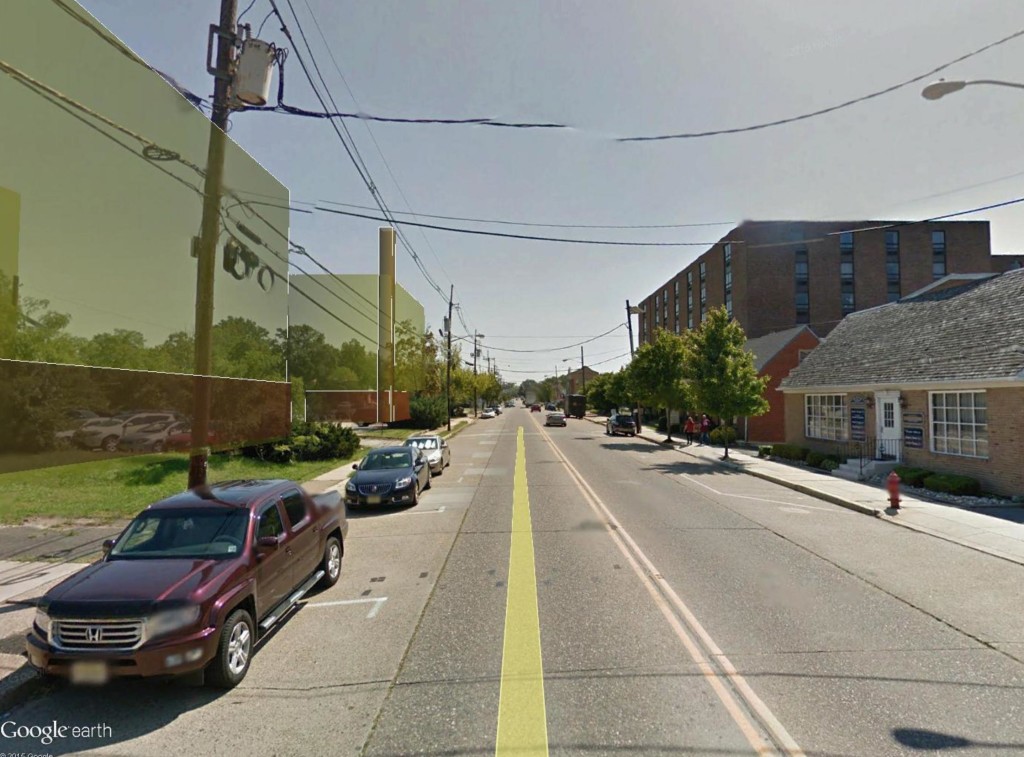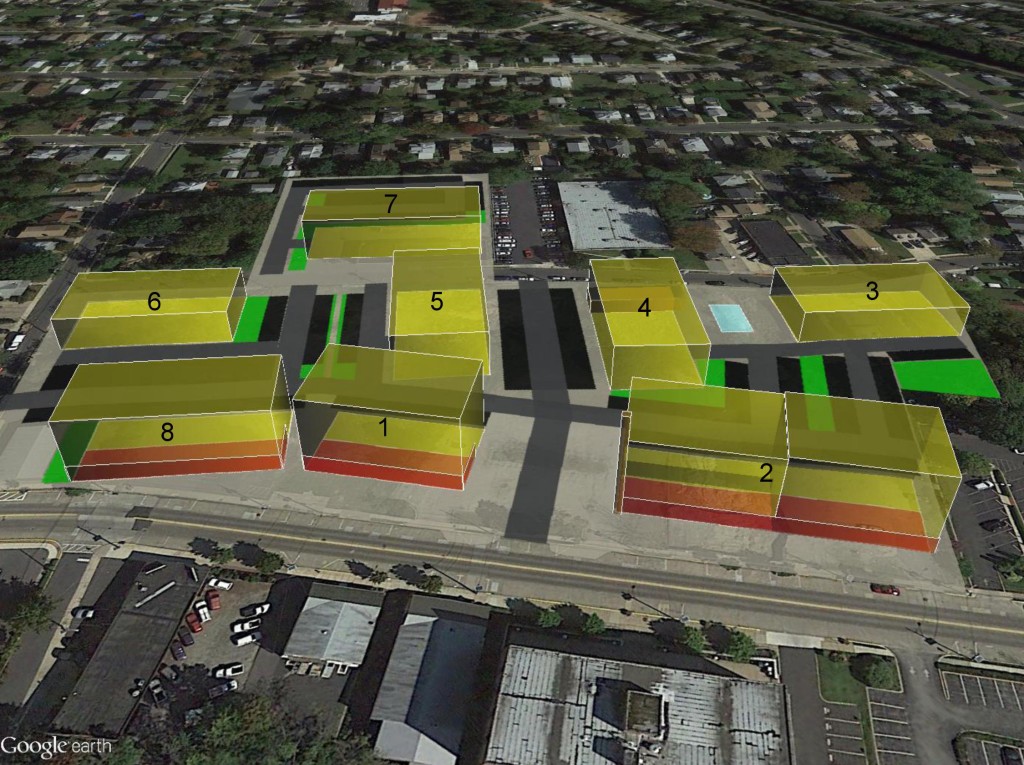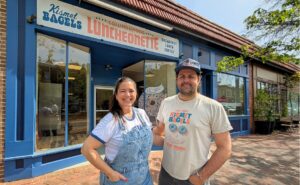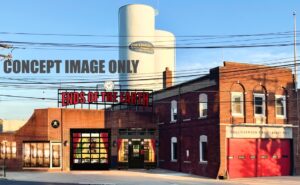Local resident Jason Miller believes that the Haddon Towne Center project could be successful if developer Fieldstone Associates is open to a handful of revisions to its design.
By Matt Skoufalos
Since the Haddon Towne Center project began to founder last year under the weight of a legal challenge from Fair Share Housing, confusion over the township’s affordable housing obligation as defined by the Council on Affordable Housing, and revisions to an award-winning transit-oriented design that threatened turned the mixed-use property into a gigantic rental apartment complex, local leaders have invited public feedback on the process.
It may have come at the eleventh hour—the Haddon Township Planning and Zoning Board will meet Thursday evening at 7:30 p.m. to hear Fieldstone Associates deliver its final site plan proposal for the development—but feedback has arrived, in the form of a handful of detailed design tweaks prepared by Haddon Township resident Jason Miller.
Miller, who is a Geographic Information Systems (GIS) specialist by trade (“I make maps for a living,” he said) is not yet a certified planner, but will sit for his Assistant Planner exam in November. He’s also the cofounder of the South Jersey Urbanists, a policy and planning-minded group of area residents who organize around smart growth principles for small downtowns. Miller said his ideas “seem almost self-evident,” and pointed out that many of them were also outlined by his urbanist cohort Joseph Russell in Russell’s critique of the Dy-Dee site plan.
“Several people came to the same conclusions on their own,” Miller said. “I’m a very visual person. I was just trying to put these things into a visual perspective that could be more tactile so that someone on the planning board could look at it and say ‘This is what they need’.”
In advance of tonight’s meeting, which may be the last public opportunity to influence the look and feel of the final project, Miller submitted a packet of renderings to the township government outlining several key revisions to the most recent plan presented by Fieldstone.
Taken together they represent significant wholesale changes to the project, but individually, none is so revolutionary as to undermine its key metrics: 252 units with sufficient parking, a mix of commercial and residential space. Yet the modifications, if adopted, would present a dramatically different property development than the one most recently proposed by the developers.
“It is a place-making design,” Miller said. “It definitely defines a space.”
1. First-floor retail along Haddon Avenue
The inclusion of commercial space in the Haddon Towne Center was one of the first things pulled from the design revisions Fieldstone proposed last year, as the developer tried to increase the density of the project to satisfy the conditions of a lawsuit from Fair Share Housing without committing dollars to building expensive garaged parking.
An eventual compromise restored 12,500 of the proposed 25,000 square-feet of retail in the original design—but only on half the areas facing Haddon Avenue (Buildings #1 and #2).
Miller’s plan redistributes the area Fieldstone had dedicated to retail among three smaller buildings (adding a five-story Building #8), each of which contains commercial space along Haddon Avenue. More importantly, it keeps first-floor apartments out of the downtown business district and connects residents more directly to the local business hub.
“Nobody would want to walk by someone’s living room and have them watch TV as you’re walking to Treno to get beer and pizza,” Miller said. “That’s why apartments are on the second floor; private living space is away from the public space.”
To do it without sacrificing units, he added in another 3,500 square-feet of retail along the Haddon Avenue frontage and raised the elevation of Buildings #1 and #2 to six stories, almost even with the height of the Sentry Office Building across the street. Miller concedes, “that’s a bigger ask,” but notes that the trade-off allows the Buildings #3 and #6, which are closest to the surrounding residential areas, to be lowered to three stories instead of four or five.
“If you make Buildings #1 and #2 taller, you can shift some of the height off the buildings that border the neighborhood,” Miller said. “It’s a more gradual taper; it will look more residential.”
2. A useful public gathering space
The Fieldstone plan creates a public greenspace in the middle of the apartment complex that is nearly inaccessible to the public for being surrounded by a sea of parking lots.
At its presentation, the developers limply suggested that the pocket park could contain a memorial to local veterans—ignoring the fact that the nearby Westmont Fire Company contains several such historic memorials and just dedicated a new one to the September 11 victims last year—lending credence to Miller’s theory that the pocket park represents leftover space that was unaccounted for in their revisions.
“They didn’t know what to do with it, I think,” Miller said. “The public space that they provided is basically a giant, green lawn where dogs are going to go to the bathroom, surrounded by parking, so nobody’s going to want to walk to it.”
Instead, Miller’s proposal incorporates “really wide berths” from the buildings to the roadway. He calculated 35-foot building setbacks that are not only pedestrian-friendly but allow for park-scaping, planters large enough for full-grown shade trees, “and lots of useful space right in front of all of the commercial space.
“We can have outdoor cafes and beer gardens,” Miller said. “There’s tons of room, and people will feel invited to that space, instead of there being trees behind the building.”
The addition of an interstitial road connecting Haddon and Highland Avenues would not only give the property a natural gateway and a necessary safety valve, but it would create a meaningful gathering place that could be closed off easily for public events like the Westmont Farmers Market, outdoor performances, food truck events, or any pop-up activity.
“If you shut off the middle road here, you have 80 or 90 feet between Buildings #1 and #2,” Miller said. “It’d be useful space.
3. A central boulevard
Another of Russell’s recommendations that Miller’s plan carries forth is breaking up the “super-block” formed along Highland Avenue in the current Fieldstone design.
By cutting that block in half, residents of Building #7 and #3 can access their homes along a streetscape and not through a parking lot.
“Every single building should face a street and have some sort of street presence so that you know ‘this is the front of the building,’” Miller said, “and the front of the building should have an address on it so that people know ‘this is my street; this is my building.’”
An interstitial street would also allow residents from throughout the surrounding neighborhoods to commute more easily to the downtown retail space or the Westmont train station via a provided pedestrian lane, instead of tromping through parking lots. The current Fieldstone design has a short entrance into the center of the development via Haddon Avenue, but “it’s jammed right into a driveway,” Miller said.
“It’s not a central corridor of a road that you’d want to walk on,” he said, “it’s a driveway with parking that doesn’t go anywhere; it just goes to more parking.”
Miller’s plan also cuts into the space that Fieldstone had dedicated for renter amenities like a swimming pool, but rescues some street parking by doing so.
“I don’t know why they need to have their own swimming pool when Crystal Lake is a half-mile away,” he said. “If you get rid of that, you get back the parking easily. Maybe the residents could get discounted passes.”
4. Reduced reliance on vehicles
Perhaps the greatest strength of the redesigns that Miller has proposed is that they are not only palatable changes on the whole, but more capably promote smart growth principles and help the facility to promote car-free living, an integral focus of transit villages, which the project has been so called.
One of the key ways Miller’s design recaptures space in the plan is by reducing the ratio of parking spaces per unit from 1.8 to 1.55, which would shed 50 spaces without compromising renters’ lifestyles.
“They’re not really taking advantage of the fact that this is a transit-oriented development,” Miller said. “A lot of transit-oriented development only needs one parking stall per unit if they’re that close to [mass] transit. One-and-a-half spaces per unit is ample.”
Miller also believes that those 50 spaces could be recaptured via shared parking agreements with its commercial neighbors, the Light House/Starting Point office building on Highland Avenue, and Treno. His numbers also do not take into account the large offsite parking currently being built by Fieldstone for its neighbors at the Sentry Office Plaza as a condition of the project.
“If [Fieldstone] coordinate[s] with Treno, they could probably fit several more parking spots in there,” Miller said. “It would be better access for them, and then the parking ratio would go even closer to what they’re doing now.”
5. Flexibility and room for growth
Miller claims that his design tweaks are akin to “rearranging deck chairs,” but they also afford the developers sufficiently greater freedom for the property given market demands.
First-floor, interior-facing residential units in Buildings #4, #5, and #7 could be repurposed as commercial spots, creating an outdoor mall lined by retail on both sides.
“You could have really nice shops come in, and people make it a destination to go to,” Miller said. “The existing office on Highland Avenue could be a whole other building that stays office with residential on top, or it could be converted to retail, or a parking garage if it does become a destination retail center.”
One of the arguments that Fieldstone made for reducing the retail footprint of the original design was the abundance of vacant commercial storefronts in the downtown Haddon Avenue shopping district presently, but Miller said that’s a bad read of the situation.
“There’s only one kind of vacant retail now: the 25-foot-wide, really old buildings that you can put an antique shop or a hair salon in,” he said. “But brand-new facilities that are hip and you don’t need to do any renovations to, you can put a lot of different things in there.
“You have people living and shopping at the same place, and you want to have activity there that is more than just one of those things,” he said; “a full day’s cycle of activities that are all in one place that make it exciting and invigorating, and then you can add to it with planned events. That’s what that plaza sort of feel can do. What [Fieldstone] designed will basically be dead all day long, and there’s no way to get through it.”
Miller even recommended the addition of some sort of architectural feature, a bell tower or a spire, to Building #2, to help orient the development in the neighborhood and create more of a sense of place that would be visible from other districts in the community.
“You could see it from down Haddon Avenue, or you could be on any of the streets, and say, ‘Oh, that’s where I have to go,’” he said. “It’s way-finding; it marks the center of the town, it’s got a plaza, and here’s this architectural feature that defines it. You’d have one district where you have the train and a bunch of bars that are easy to reach, and then you have the shops down by MacMillan’s and the Westmont.”
Although he knows his feedback is coming late in the game in its final form, Miller is hopeful that the developers and the local government, both of which have requested feedback from area residents, will be interested in the possibilities his ideas open up for the site.
“These guys have been invested in this for 10 years, they need to see profits,” Miller said. “I’m hopeful that they’re genuine and that they want to see design ideas, and that they’re accepting of them, and that they can understand that this is something that will be around for 100 years.”
Get more local news that matters. Check out NJ Pen on Facebook and Twitter, [tinypass_offer text=”or click here to become a supporter.”]

